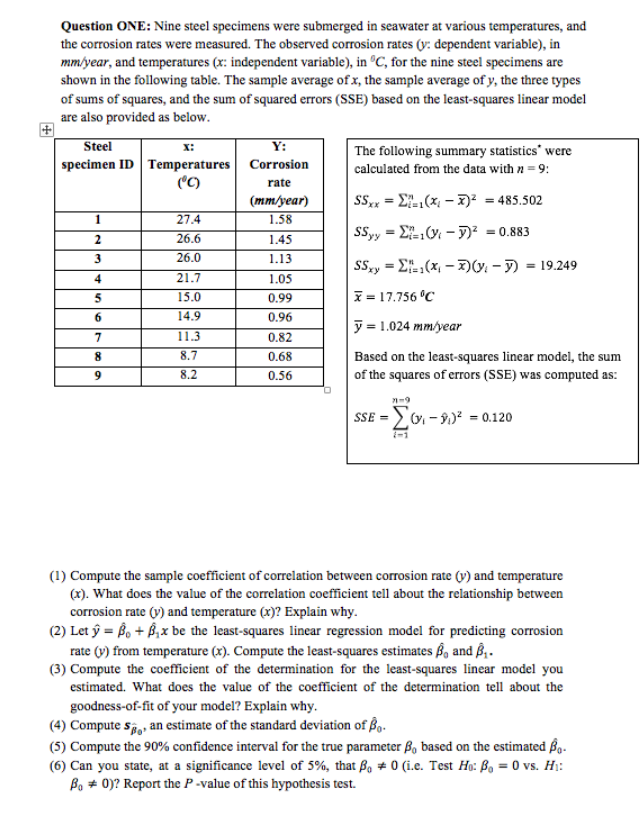tes were measured. The observed corrosion rates (y: dependent mperatures (x: independent variable), in ºC, for the nine steel sp lowing table. The sample average of x, the sample average of y res, and the sum of squared errors (SSE) based on the least-squa d as below. Y: The following summary : calculated from the data w X: Temperatures Corrosion ('C) rate (ттуear) 1.58 27.4 26.6 1.45 26.0 1.13 SS,y = E-,(x, – 3)V 21.7 1.05 15.0 ī = 17.756 °C 0.99 14.9 0.96 y = 1.024 mm/year 11.3 0.82
Inverse Normal Distribution
The method used for finding the corresponding z-critical value in a normal distribution using the known probability is said to be an inverse normal distribution. The inverse normal distribution is a continuous probability distribution with a family of two parameters.
Mean, Median, Mode
It is a descriptive summary of a data set. It can be defined by using some of the measures. The central tendencies do not provide information regarding individual data from the dataset. However, they give a summary of the data set. The central tendency or measure of central tendency is a central or typical value for a probability distribution.
Z-Scores
A z-score is a unit of measurement used in statistics to describe the position of a raw score in terms of its distance from the mean, measured with reference to standard deviation from the mean. Z-scores are useful in statistics because they allow comparison between two scores that belong to different normal distributions.

Step by step
Solved in 3 steps with 2 images


